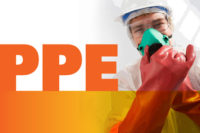The first of the World Health Organization’s (WHO) Global Patient Safety Challenges was Clean Care is Safer Care, which was launched in 2005. It targeted reducing health care-associated infections (HCAIs). HCAI is the most frequent harmful event in health-care delivery and occurs worldwide in both developed and developing countries. Hundreds of millions of patients are affected each year by HCAI, leading to significant mortality and financial losses for health systems too.
The initial focus of Clean Care is Safer Care was to promote best hand hygiene practices globally, at all levels of health care, as a first step in ensuring high standards of infection control and patient safety.
Hand hygiene, a critical action to ensure hands are free of potentially harmful germs, is well accepted to be the primary measure to reduce HCAI, thereby enhancing patient safety. The on-going vision of the Clean Care is Safer Care program of work is to make all aspects of infection prevention and control a priority in health care everywhere, with clean hands at the heart of this.
For this reason, the annual WHO campaign, SAVE LIVES: Clean Your Hands, launched in 2009, aims to maintain the global profile.
The main objectives of Clean Care is Safer Care include 1) raising awareness about the burden of HCAI and the importance of hand hygiene; 2) catalyzing political and other stakeholder commitment and action to reduce HCAI; 3) developing technical guidance and recommendations; 4) supporting actions in Member States; and 5) coordinating the sharing of information about activities among existing country/area hand hygiene campaigns, including through an informal but well-established network called CleanHandsNet.
Key accomplishments of Clean Care is Safer Care
- More than two thirds of Ministries of Health from Member States worldwide have so far signed formal statements pledging their commitment to take action to reduce HCAI at the country level, in particular through hand hygiene improvement.
- WHO Guidelines on Hand Hygiene in Health Care; the first international guidelines on this topic, providing technical recommendations to health-care facilities worldwide.
- A report on the burden of endemic HCAIs worldwide.
- A summary literature review of multi-drug resistant organisms and the relationship with hand hygiene.
- The WHO "My Five Moments for Hand Hygiene"; a user-friendly, innovative way to understand, monitor and practice hand hygiene action at the point of patient care.
- A Multimodal Improvement Strategy based on the recommendations in the Guidelines; field tested in a wide range of different health-care settings for feasibility, adaptability and success, subsequently demonstrated both in high and low-/middle-income countries.
- A package of over 30 implementation tools to support the Strategy (thus far in three official WHO languages) including posters, templates, instructions.
- A Guide to the Application of the WHO Multimodal Hand Hygiene Improvement Strategy and the "My Five Moments For Hand Hygiene" approach in Outpatient and Home-based Care and Long-term Care Facilities, accompanied by adapted tools.
- A WHO Hand Hygiene Self-Assessment Framework, to help track progress with hand hygiene sustainability.
- Sign-up from well over 17 000 health-care facilities in support of SAVE LIVES: Clean Your Hands; the overall approach to hand hygiene improvement provided by WHO has been extremely successful and widely adopted in health-care settings worldwide.
- 64 scientific publications and 49 abstracts at international conferences.
- Engagement of leading infection prevention and control societies and institutions.
- Cascade training on infection control to build capacity globally and at country level and establishment of regular virtual training sessions.
- WHO Moment 1 'before touching a patient' global observation survey report (2010).
- WHO Hand Hygiene Self-Assessment Framework global survey report (2012).
- A summary review of hand hygiene monitoring and feedback (2013).
- A number of other reports and tools from SAVE LIVES: Clean Your Hands every 5 May activities.
Moving forward
WHO Clean Care is Safer Care will continue to provide leadership and advocate to support a reduction in the global endemic burden of health care-associated infections, including:
- Promoting activities for hand hygiene improvement and sustainability, primarily through the SAVE LIVES: Clean Your Hands campaign, moving countries from commitment to true action at the point of care.
- Identifying specific new solutions to be developed and promoted in addition to hand hygiene. Special focus is being put on the prevention of specific infection types, in particular surgical site and bloodstream infections, in collaboration with other WHO programmes and global experts. A focus on the importance of safe injections is also a feature.
- Coordinating of WHO CleanHandsNet and Private Organizations for Patient Safety (POPS).
- Providing new information on hand hygiene evidence on our web pages.
- Identifying feasible infection control strategies to be adapted to limited resource settings.
- Supporting knowledge transfer of key infection control principles through a range of mechanisms.
- Identifying gaps in the infection control evidence as well as new global threats, working alongside other global experts, and promoting appropriate research and collaboration.
- Identifying gaps in the infection control evidence and new threats, working alongside other global experts.
Source: World Health Organization www.who.int


